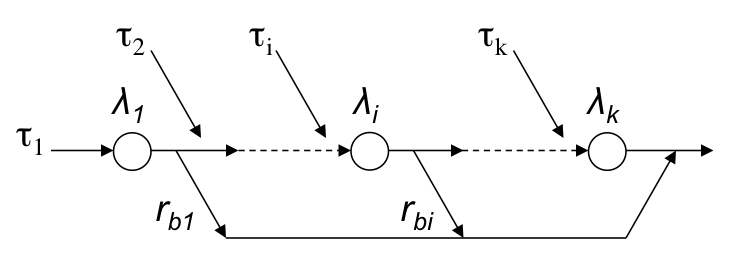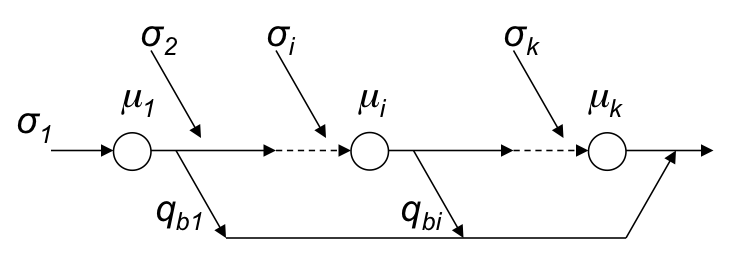1) Type in the parameters of the queue
|
|
C |
|
Number of servers 
|
|
N |
|
Maximum number in system (buffer +
server) 
|
|
2) Select the inter-arrival time
|
| by:
its mean and coefficient of variation
or a specific Coxian distribution |
|
j
ta
|
|
Mean time between arrivals
Number of phases (max=10)
|
|
cva
|
|
Coefficient of variation
|
|

Services follow a generalized Coxian distribution
σ i  μ i  q bi
Phase 1:
Phase 2:
Phase 3:
Phase 4:
Phase 5:
Phase 6:
Phase 7:
Phase 8:
Phase 9:
Phase 10:
|
3) Select the service time
|
| by:
its mean and coefficient of variation
or a specific Coxian distribution |
|
k
ts
|
|
Mean service time
Number of phases (max=10)
|
|
cvs
|
|
Coefficient of variation
|

Services follow a generalized Coxian distribution
σ i  μ i  q bi
Phase 1:
Phase 2:
Phase 3:
Phase 4:
Phase 5:
Phase 6:
Phase 7:
Phase 8:
Phase 9:
Phase 10:
|

